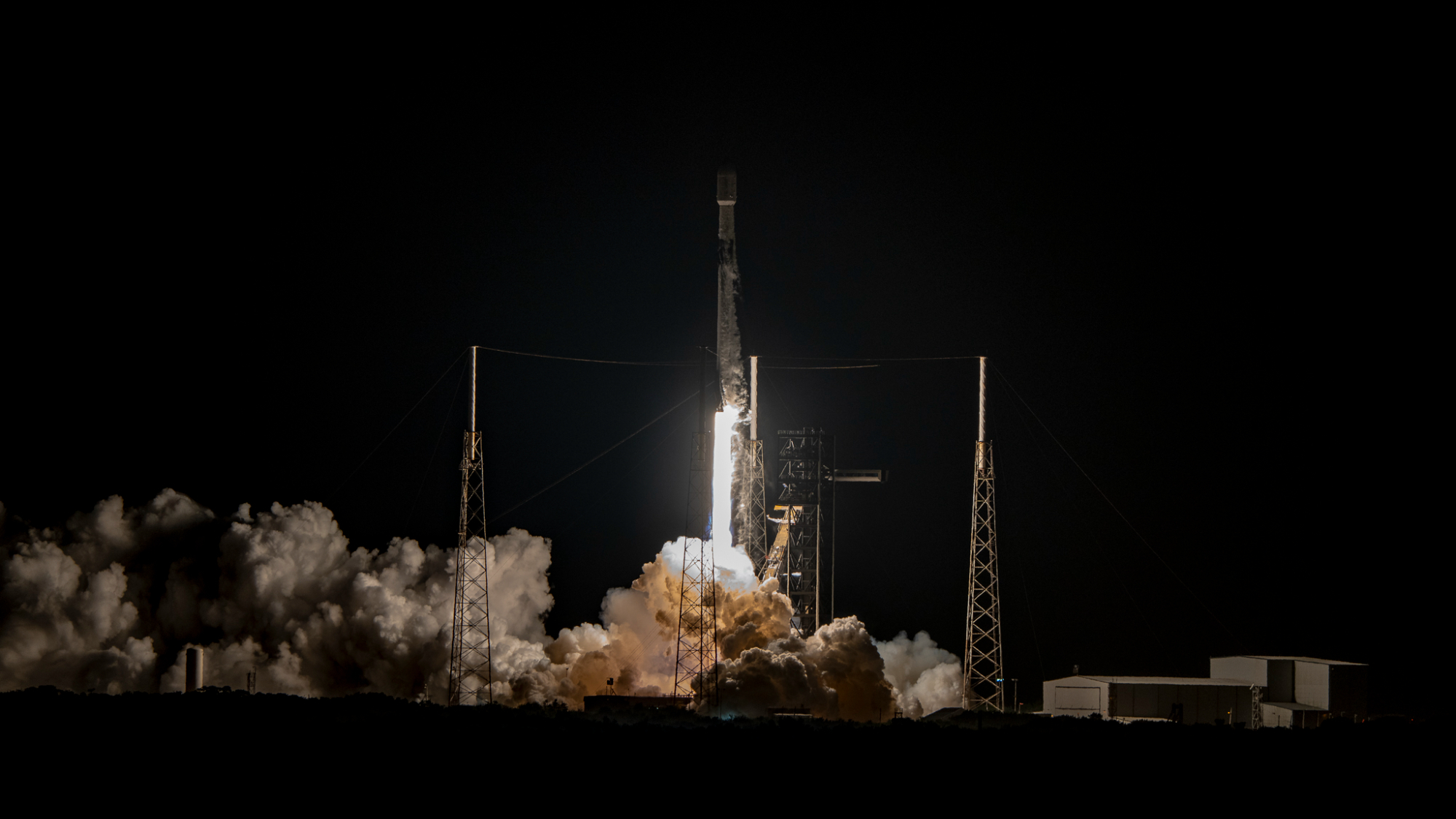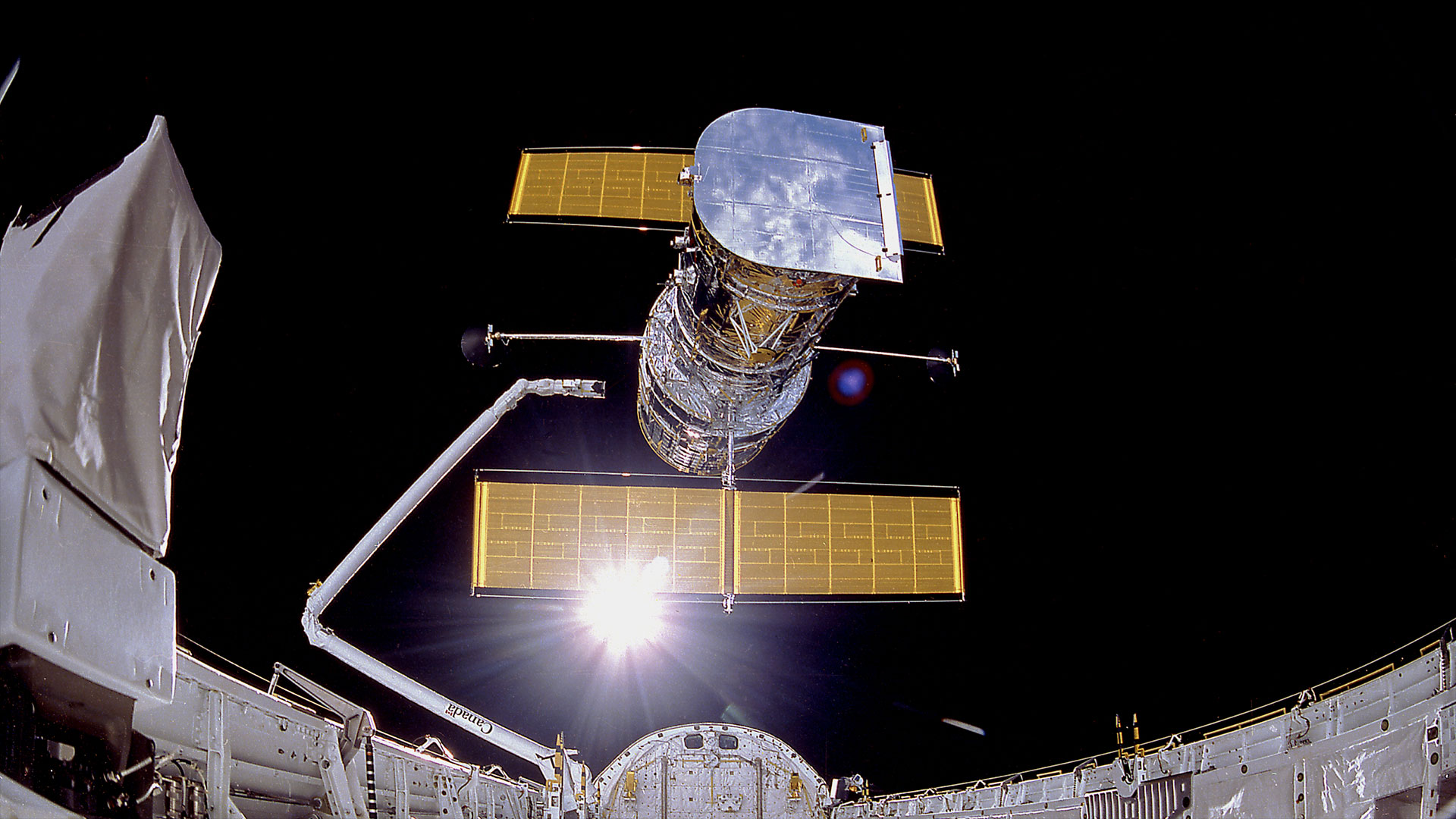Ready to launch: National Air and Space Museum set to reopen with new galleries
The first phase of a 7-year, $900 million transformation, the reimagined exhibit spaces include "Destination Moon" and "Exploring the Planets."

Margaret Weitekamp was certain what she was seeing was not real.
Looking at a photo taken in one of the new galleries, the chair of the National Air and Space Museum's space history division was sure it was a rendering, one she had seen many times before.
"My first thought was, no, that's the rendering of what it's going to look like," said Weitekamp. Then Weitekamp noticed the construction cones in one corner of the image. "Oh, it looks like just like the rendering! It turned out just the way we planned," she said.
Related: Gallery: Smithsonian National Air and Space Museum: America's Aerospace Treasures
More than five years in the making, the public will get its first chance to compare the previously released artist's concepts with the real, re-imagined galleries when the Smithsonian reopens the National Air and Space Museum's flagship building on Oct. 14 in Washington, D.C. Only half of the building — eight exhibitions on the museum's west side — are ready; the east wing still has a few more years before the $900 million exterior and interior renovation is complete.
Judging by the demand for free timed-entry passes, though, access to just some of the Air and Space seems to be far more preferred than none at all (the building has been closed since late March).

"All of this is just becoming real for the staff and they're ready to share it with the public," said Jeremy Kinney, associate director for research and curatorial affairs at the Air and Space Museum, in an interview with collectSPACE.com. "There's also an openness and enthusiasm for what the feedback is going to be on the exhibitions."
Get the Space.com Newsletter
Breaking space news, the latest updates on rocket launches, skywatching events and more!
"This is the final test. You can do audience surveys, you can do some testing, you can do some prototyping and discussing with people who have experience with the visitor experience, but it's now time to see just how well it does. We are excited about that in that we want to learn from that," he said.
Wait until you see ... the bathrooms
Of the eight galleries ready to debut, four are dedicated to aviation ("America by Air," "Early Flight," "Thomas W. Haas We All Fly" and "Wright Brothers & the Invention of the Aerial Age"), two bridge aeronautics and astronautics ("Nation of Speed" and "One World Connected") and two are focused on space exploration ("Destination Moon" and "Kenneth C. Griffin Exploring the Planets Gallery"). The renovations, however, to more than just the display spaces.
"We have created amenities that will make for a better visitor experience," Weitekamp told collectSPACE. "We have more restrooms and have interesting features in those restrooms. We have facts in there about bathrooms on aircraft and in space."
"I just think that's a fun place to layer a bit of learning into a place that otherwise would have been a dead spot," she said.
Of course, the exhibition areas are the reason people come to the museum and they are the true highlights of the new work. In addition to artifact displays — in "Destination Moon," for example, the silverly pressure suit worn by Alan Shepard stands next to his Mercury capsule on which he became the first American to fly into space — new interactives bring visitors to new worlds.

"The new 'Griffin Exploring the Planets' gallery takes you on a fresh look at our solar system, almost literally coming from the outside in, instead of starting from the sun and working your way out," said Weitekamp. "It really will bring people face to face with some of the latest science that's being done by our own planetary geologists on staff at the Smithsonian and housed at the National Air and Space Museum."
"There's a wonderful, immersive interactive in the middle [of the gallery] where you can wheel or walk into the space to have this experience, visually, of what it would look like to stand on another world," she said. "It imagines you on the moon, or on Mars or Venus."
Over the course of the last week, Weitekamp and her fellow curators have had the chance to walk through the new galleries and experience the reimagined museum as the public will soon.
"I have to say, I'm really pleased," she said. "It's beautiful. It's fresh and clean. And I think sharp, it's elegant."
Where Air meets Space
Although there are still galleries devoted to each, the new exhibitions find ways to highlight the "and" in Air and Space.
"Before, we had one side [of the museum] dealing with air and the other was space. Now we have a mix," said Kinney. "So when our visitors come in, whether they come to see an airplane or a spacecraft, they are going to see both just by going through the building. We made a conscious effort to bring those two stories together."

For example, on the far end of the west wing, displayed outside of the "Nation of Speed" and "Exploring the Planets" galleries is a supersonic jet flown by a record-setting aviator.
"We have a T-38, which Jackie Cochran flew. It is not the aircraft in which she broke the sound barrier, but it is one in which she set eight different records and those are stenciled on the nose," said Weitekamp. "We've got a large screen behind it that will have some videos on it, including one about Jackie Cochran, herself, that connects her to the larger world of women in aviation."
"And then we've got a wonderful video about the T-38 and the role that it has played in military training, as an astronaut trainer and a demonstration aircraft," she said. "I love that we use the large format screen to tell multiple stories. They are rooted in that one object to familiarize people with Jackie Cochran as a pioneering aviator, but then also look at the ways that the T-38 has been such a formative and abridging technology for both aviation and spaceflight."
Similar crossovers can be be found in "One World Connected," which juxtaposes the role that airplanes have had in making connections across vast distances with the way that global communications were eased by satellites in orbit, and "Nation of Speed" which places race cars next to rockets to explore how our fascination with moving faster has shaped our national identity.
"It has been a daunting task to reach into every corner of the museum," Kinney said, "but for the curators, the educators, collection staff, exhibit designers, exhibit production staff and everyone else involved, it has been an amazing opportunity."
Follow collectSPACE.com on Facebook and on Twitter at @collectSPACE. Copyright 2022 collectSPACE.com. All rights reserved.
Join our Space Forums to keep talking space on the latest missions, night sky and more! And if you have a news tip, correction or comment, let us know at: community@space.com.

Robert Pearlman is a space historian, journalist and the founder and editor of collectSPACE.com, a daily news publication and community devoted to space history with a particular focus on how and where space exploration intersects with pop culture. Pearlman is also a contributing writer for Space.com and co-author of "Space Stations: The Art, Science, and Reality of Working in Space” published by Smithsonian Books in 2018.In 2009, he was inducted into the U.S. Space Camp Hall of Fame in Huntsville, Alabama. In 2021, he was honored by the American Astronautical Society with the Ordway Award for Sustained Excellence in Spaceflight History. In 2023, the National Space Club Florida Committee recognized Pearlman with the Kolcum News and Communications Award for excellence in telling the space story along the Space Coast and throughout the world.










